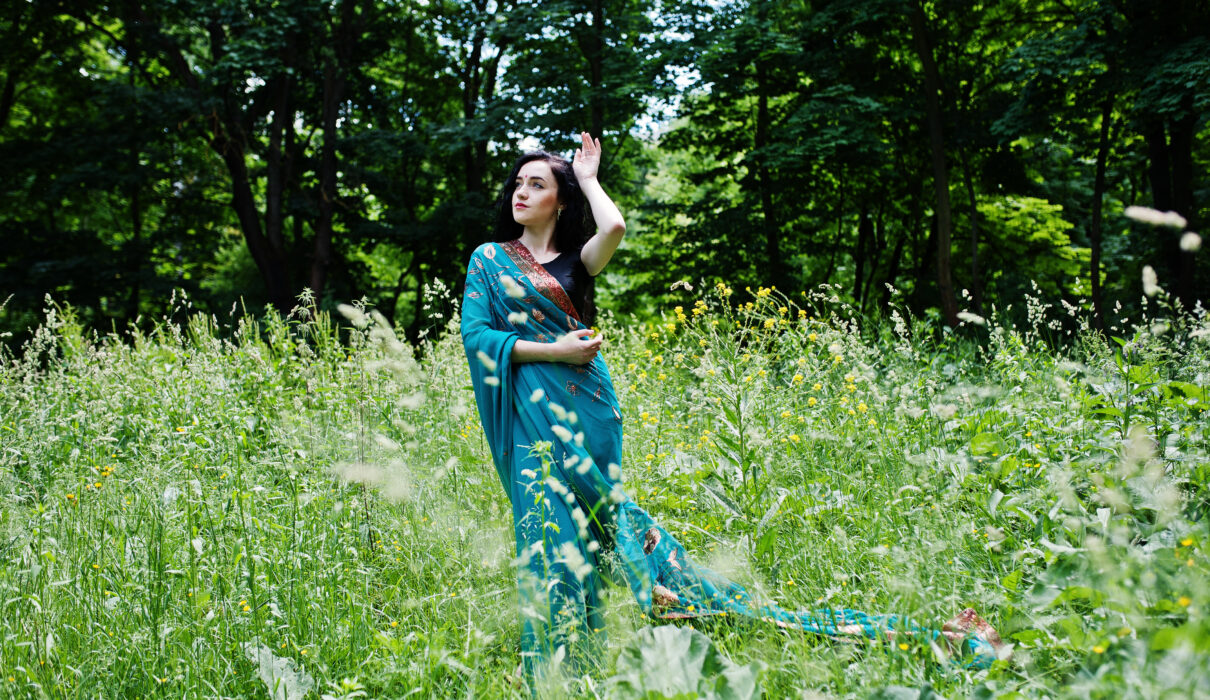Banarasi sarees, with their rich textures, intricate motifs, and timeless appeal, are more than just traditional attire — they are living pieces of India’s cultural heritage. Woven in the ancient city of Varanasi (also known as Banaras or Kashi), these sarees carry a legacy of craftsmanship that dates back several centuries, reflecting the artistry, patience, and devotion of Indian weavers.
In this blog post, we take you behind the loom to explore the origins, artistry, and efforts to preserve the legacy of Banarasi sarees — a heritage that defines elegance and identity for generations of Indian women.
A Royal Beginning
The story of Banarasi sarees begins in the Mughal era, when Persian-inspired designs and motifs found their way into Indian textiles. It is believed that Mughal emperors, enchanted by the skill of local weavers in Varanasi, encouraged them to create elaborate silk fabrics with gold and silver brocade — what we now know as zari. These early versions of Banarasi sarees were worn by royalty and aristocrats, often taking months to weave.
The traditional Banarasi saree soon evolved into a symbol of grandeur, with its trademark features — intricate floral and foliate motifs (kalga and bel), Mughal-inspired patterns, and fine silk base.
The Art of Weaving Banarasi Sarees
Each Banarasi saree is a masterpiece, woven with care and complexity. It can take anywhere between 15 to 30 days to create a single saree, depending on the design and technique used. Some of the weaving techniques include:
- Katan – Pure silk threads handwoven into a sturdy, luxurious fabric.
- Organza with Zari and Silk – Known for its delicate texture and rich embroidery.
- Jangla – Sarees with heavy, intricate jungle-inspired patterns.
- Tanchoi – Known for its colorful weft patterns and satin finish.
The motifs on Banarasi sarees are often symbolic — peacocks for grace, paisleys for fertility, and lotus flowers for spiritual purity. The zari work (gold and silver threads) adds a royal sheen, making these sarees ideal for weddings and special occasions.
The Lives Behind the Looms
At the heart of every Banarasi saree are the weavers — often belonging to generations of families who have passed down their knowledge and skills. The city of Varanasi is dotted with small handloom clusters, where artisans work from modest workshops, using techniques unchanged for hundreds of years.
However, the industry has faced significant challenges in recent decades — from the rise of power looms and machine-made imitations to a decline in younger generations taking up the craft. This has threatened not only the livelihoods of the weavers but also the survival of authentic Banarasi weaving traditions.
Preservation Through Revival
Thankfully, recent years have seen a cultural and commercial revival of Banarasi sarees. Designers, NGOs, and government bodies are working to promote handloom sarees, provide fair wages to artisans, and educate buyers about identifying authentic weaves.
The Geographical Indication (GI) tag awarded to Banarasi sarees has helped preserve their uniqueness and protect them from mass-produced replicas. Additionally, exhibitions, sustainable fashion campaigns, and influencer endorsements have brought Banarasi back into the spotlight — not just as bridal wear, but as elegant, everyday heirlooms.
Why Banarasi Still Matters Today
Wearing a Banarasi saree today is about more than style — it’s a choice to support an age-old craft, to value handmade over mass-produced, and to carry forward a legacy that represents India’s artistic soul.
Whether it’s worn at a wedding, a festive celebration, or even as a modern twist with a shirt blouse or belt, a Banarasi saree continues to adapt without losing its essence.
In Conclusion
The story of Banarasi sarees is the story of India — rich, layered, artistic, and deeply resilient. As consumers and admirers of tradition, we hold the power to ensure that these sarees don’t just survive but thrive for generations to come.
So the next time you drape a Banarasi saree, take a moment to appreciate the hands that wove it, the history it carries, and the legacy you’re helping to keep alive.


